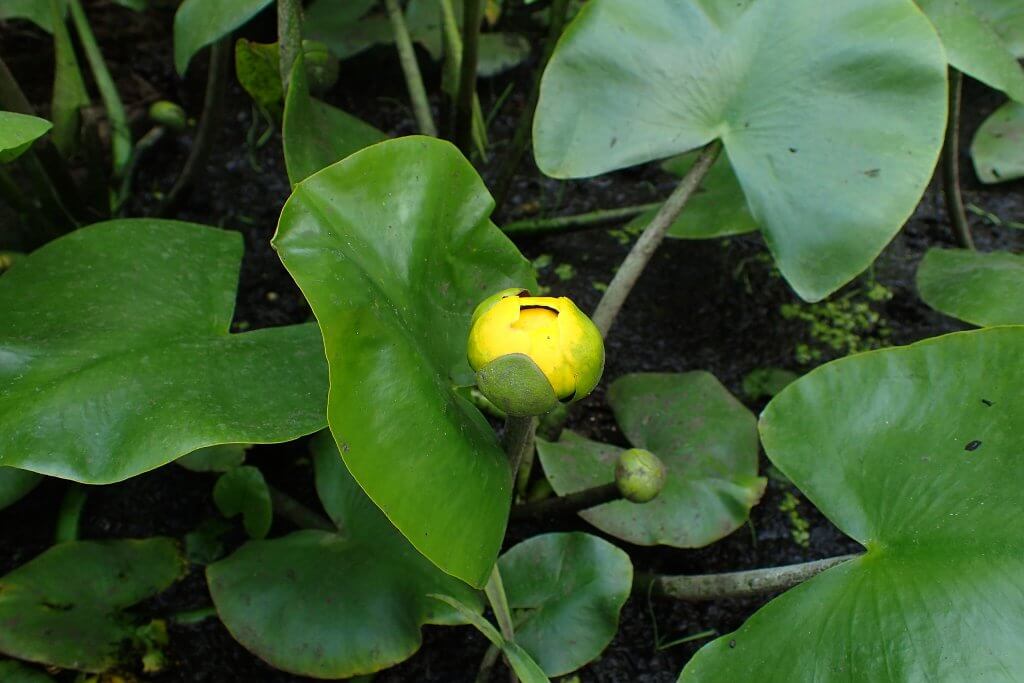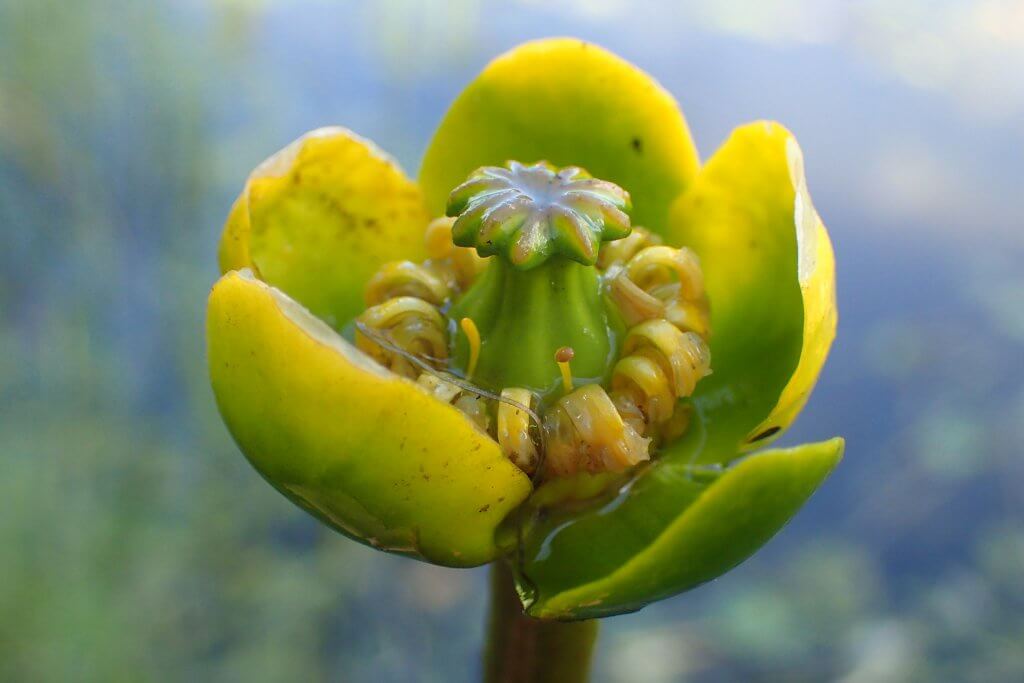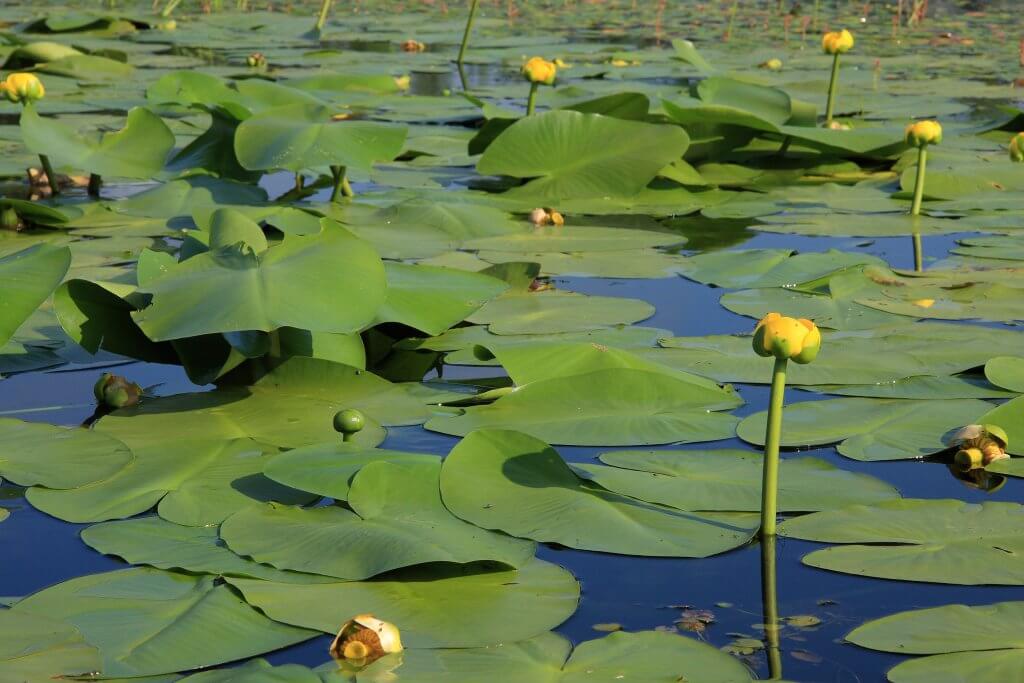Yellow pond lily (Nuphar spp.), is the name given to a number of species within the Nymphaeaceae family. With the true number of species currently unknown, you will usually find them within temperate regions, particularly in far northern area with a cooler climate. You can find a number of yellow pond lilies growing natively within the US.
Species including the cow-lily or spatterdock (Nuphar advena) and variegated pond-lily (Nuphar variegata), which are both native to the northeastern and midwestern states. The small yellow pond-lily (Nuphar pumila), can also be found in some midwestern states, but is far less common.

Similar in nature to water lilies, and even occasionally referred to by the same name, yellow pond lilies have much smaller petal formations. Their sepals tend to be larger in size than the petals themselves. However like water lilies, their leaves are heart shaped and float on the surface of the water. Each leaf is suspended by a long petiole that emerges from the thick root stem buried in the mud of the lake or pond.
The flowers are bright yellow, losing the outer sepals in summer, and developing into fruits that droop and sit above the water. Found within each fruit is a collection of small seeds that greatly resemble kernels of corn.
Interestingly, the cape fear spatterdock (Nuphar sagittifolia), native to the Carolinas, has noticeably different leaf shapes. It has narrow pointed leaves, differing completely to the large rounded shape of other members of the genus.
Edible parts and other uses
The roots, young leaves, flowers and seeds are all edible, although many foragers favor different parts of the plant. The roots and young leaves can have a bitter flavoring, however many have discovered that the taste becomes much more mild depending on when you harvest them.
The seeds are the sweetest treat. You can eat these raw, or cook them in soups and other dishes. They can generally be used in the same way that you would use corn or peas.
The seeds were frequently collected by native Americans as a nutritious raw food source. They were also used in the making of bread by grinding the seeds to create a flour.

Cautions
When foraging for yellow pond lily, take care to avoid urban areas where pollution or contamination could effect the cleanliness of the water. It is generally best practice to forage in areas away from urban development.
It is considered safe to eat the plant raw, however as an aquatic plant it is often recommended to cook before eating. You can also greatly improve its flavoring by breaking down any bitter tasting compounds.
Foraging
Look for yellow pond lilies in similar locations to American lotus. Wild ponds, lake edges and rivers, creeks and streams with slow moving water are the perfect places to forage. Just like the lotus, they spread easily via seeds and creeping rhizomes, so you will likely find large colonies of the plant.

The roots tend to have a better flavoring before the plant flowers. So it may be worth scouting out a colony of plants during the summer when the flowers are visible. Then returning early next spring to harvest the roots.
To collect the seed pods, venture out in late summer and early fall. You will likely need some waders on whilst foraging for yellow pond lily. And possibly a towel if you plan to swim down to unearth the roots below!
Did you know…
The plant has been greatly valued in herbal remedies and folk medicine in many cultures. From using the roots to aid digestion, to utilising the leaves as a poultice and to stem bleeding. Recent studies have concluded that the plant does in fact contain astringent compounds.
Conclusion
With long stems reaching up to 5 meters down to the roots below, foraging for the tasty seeds may be better suited to a novice forager. Cooked in a pan and seasoned with a little salt or sugar and you have yourself a fantastic, foraged ‘popcorn’ snack.
—————Written by Hannah Sweet
Hannah is a freelance writer and graphic designer from the UK. With a penchant for travelling, photography and all things botanical, she enjoys writing about a wealth of topics and issues, from conservation and slow living, to design and travel. Learn more about her writing and design services at www.sweetmeanders.co
Many of our readers find that subscribing to Eat The Planet is the best way to make sure they don't miss any of our valuable information about wild edibles.
See our privacy policy for more information about ads on this site






